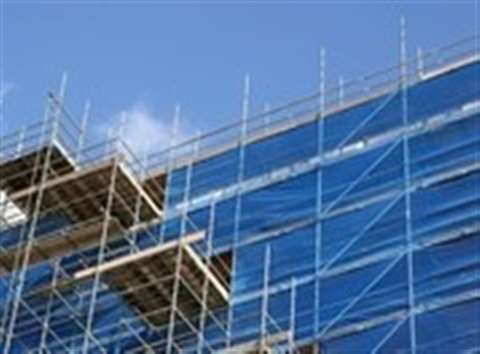Scaffold safety checklist issued
11 March 2019

The UK’s Health & Safety Executive (HSE) has issued the scaffold checklist. The guide clarifies when scaffolding is required and what level of training and competence those erecting, dismantling, altering, inspecting and supervising it are expected to have.
It is a requirement of the UK Work at Height Regulations 2005 that unless a scaffold is assembled to a generally recognised standard configuration, for example, NASC Technical Guidance TG20 for tube and fitting scaffolds or similar guidance from manufacturers of system scaffolds, the scaffold should be designed by bespoke calculation, by a competent person, to ensure it will have adequate strength, rigidity and stability while it is erected, used and dismantled.
The checklist states that at the start of the planning process, the user should supply relevant information to the scaffold contractor to ensure an accurate and proper design process is followed. Typically this information should include:
- site location
- period of time the scaffold is required to be in place
- intended use
- height and length and any critical dimensions which may affect the scaffold
- number of boarded lifts
- maximum working loads to be imposed and maximum number of people using the scaffold at any one time
- type of access onto the scaffold, for example, staircase, ladder bay, external ladders
- whether there is a requirement for sheeting, netting or brickguards
- any specific requirements or provisions eg pedestrian walkway, restriction on tie locations, inclusion/provision for mechanical handling plant eg hoist)
- nature of the ground conditions or supporting structure
- information on the structure/building the scaffold will be erected against together with any relevant dimensions and drawings
- any restrictions that may affect the erection, alteration or dismantling process
Prior to installation, the scaffold contractor or scaffold designer can then provide relevant information about the scaffold. This should include:
- type of scaffold required (tube & fitting or system)
- maximum bay lengths
- maximum lift heights
- platform boarding arrangement (ie 5 + 2) and the number of boarded lifts that can be used at any one time
- safe working load / load class
- maximum leg loads
- maximum tie spacing both horizontal and vertical and tie duty
- details of additional elements such as beamed bridges, fans, loading bays etc, which may be a standard configuration (see note 1 ref TG20:13) or specifically designed
- information can be included in relevant drawings if appropriate
- any other information relevant to the design, installation or use of the scaffold
- reference number, date etc. to enable recording, referencing and checking
The advisory document goes on to say all scaffolding must be erected, dismantled and altered in a safe manner. This is achieved by following the guidance provided by the NASC in document SG4 ‘Preventing falls in scaffolding’ for tube and fitting scaffolds or by following similar guidance provided by the manufacturers of system scaffolding.
For scaffolds that fall outside the scope of a generally recognised standard configuration the design must be such that safe erection and dismantling techniques can also be employed throughout the duration of the works. To ensure stability for more complex scaffolds, drawings should be produced and, where necessary, these may need to be supplemented with specific instructions.
Any proposed modification or alteration that takes a scaffold outside the scope of a generally recognised standard configuration should be designed by a competent person and proven by calculation.




